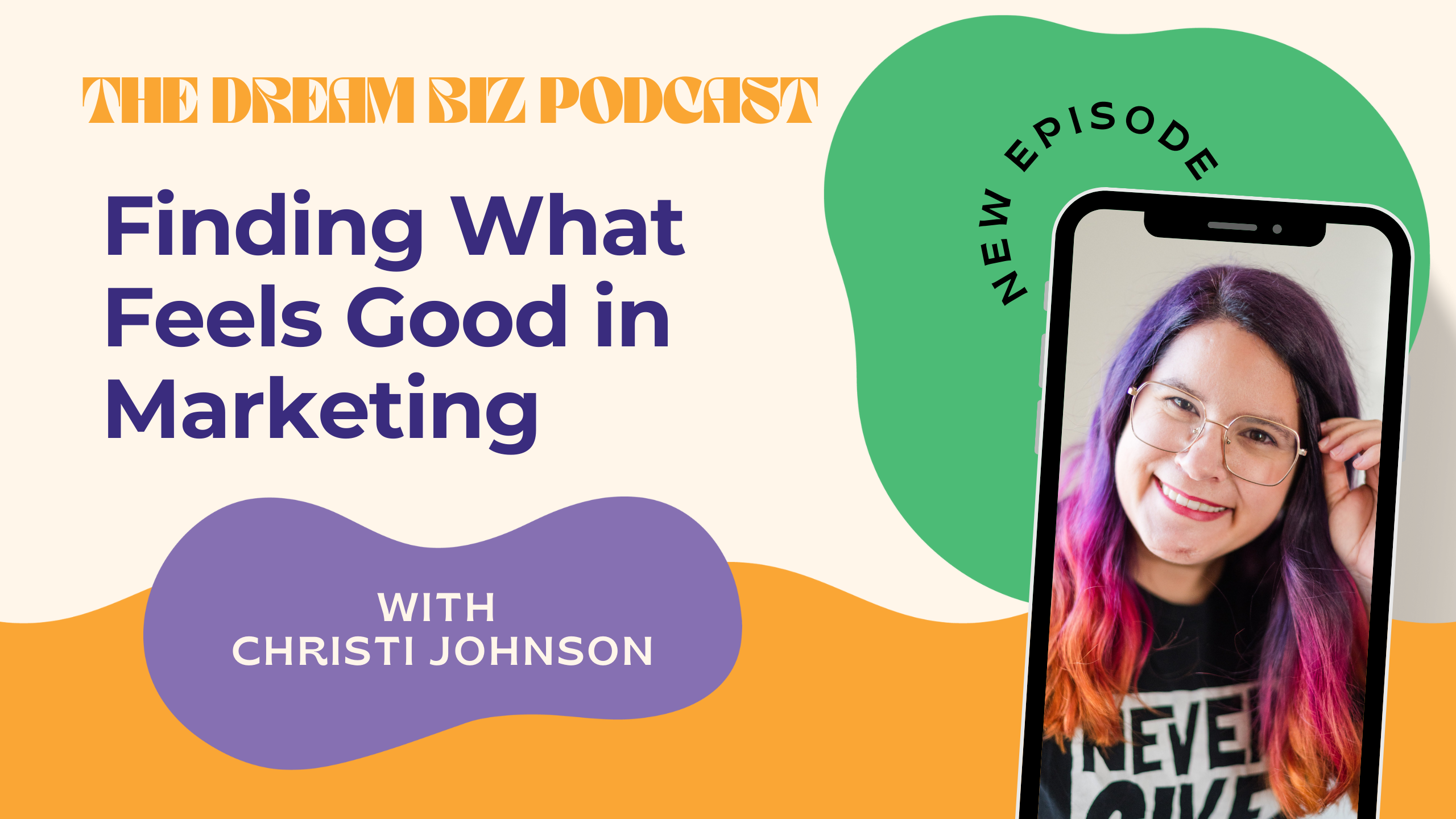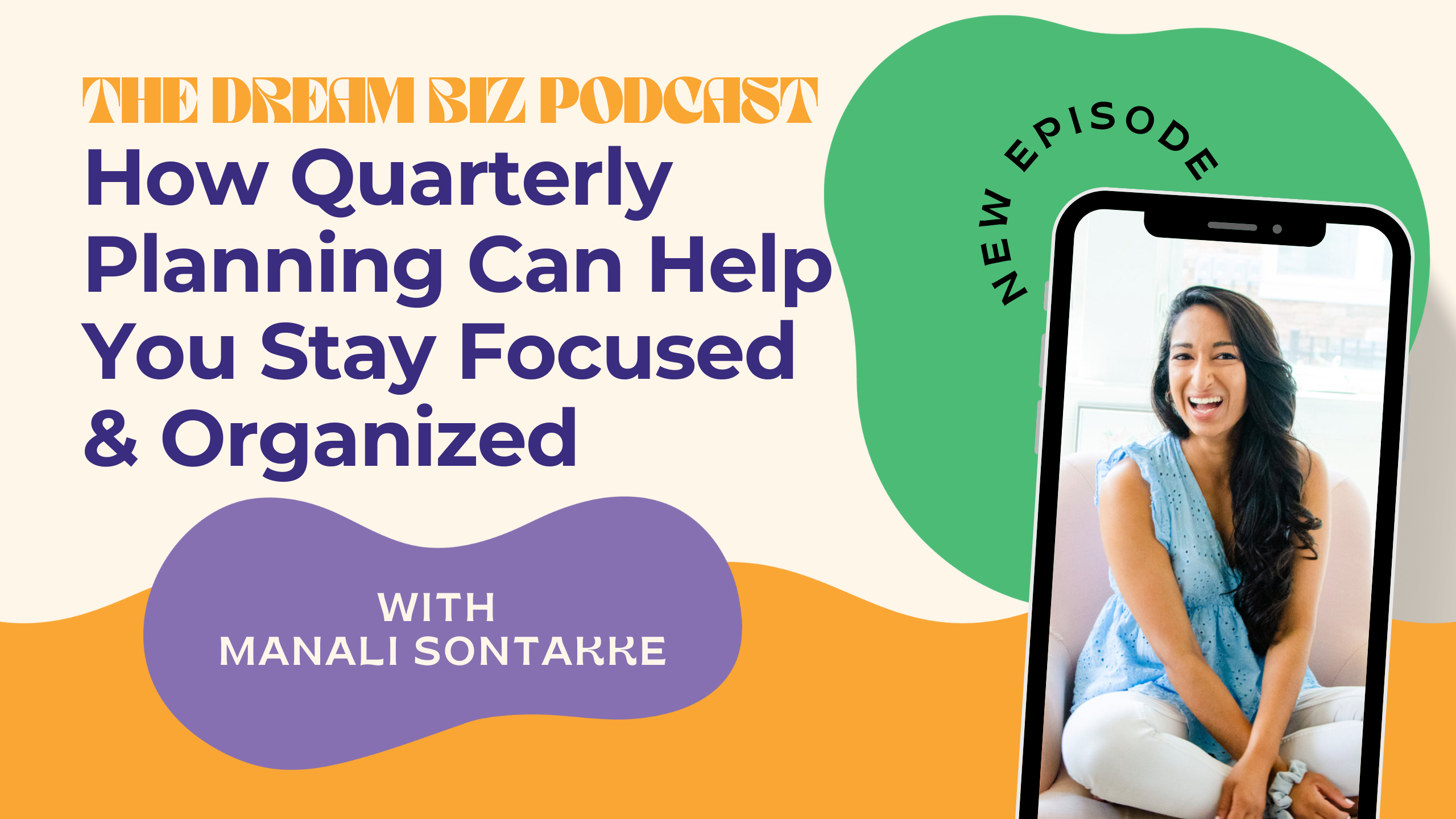Sales pages are one of the toughest pieces of marketing collateral to write! How do you entice people to buy from you and still be honest about your offer? And how do you help them to keep reading? Most importantly – how do you help them convert? It’s all here in today’s episode of the Dream Biz Podcast!

Listen Below
>Watch the episode & Read the Transcript<
What’s the Purpose of a Sales Page?
A sales page is designed to sell an offer to a potential buyer. It’s laid out strategically to make sure that every step of the way they learn and more about the offer and are more likely to buy. When designing your page, make sure there are no other links anywhere on the page. The goal of the sales page is simple: to convert the potential customer into a buyer. So don’t distract them with any other links! You also want to add Calls to Action across the page so that as soon as they are ready to buy they can easily click through. Now, let’s talk about how to pay out your sales page!
How to Lay Out your Sales Page
1. Hero Section: Grab Attention
The hero or header is your sales page’s first impression. It’s the photo and tagline above the fold that screams, “Hey, ideal client, this is for you!” Don’t forget the “Register Now” button, a direct pathway to conversion.
Crafting a compelling hero section requires a captivating photo that resonates with your ideal client. Accompany this with a tagline or transformation statement that sets the stage for what’s to come. The “Register Now” button adds a sense of urgency, nudging visitors to take immediate action.
2. Pain Points and Ideal Future
Next, dive into the empathy pool. Acknowledge your audience’s pain points and then swiftly transition to the ideal future they could enjoy. Paint a vivid picture of transformation.
Addressing pain points establishes a connection with your audience. Share relatable scenarios and challenges, making them feel understood. Seamlessly transition to the ideal future, showcasing the positive outcomes they can achieve through your offering.
3. Introduce Your Offer: The Game-Changer
This is where you present your offer as the solution to their challenges. Break down what’s inside, offering a checklist or key features.
Clearly outline what your offer brings to the table. Create a sense of value by detailing the components – be it video lessons, templates, or any other unique features. Provide a snapshot of the transformation your offer facilitates.
4. Testimonials: Social Proof
Inject trust with testimonials. Let your satisfied clients speak to your expertise and how you’ve transformed their lives or businesses.
Testimonials add credibility and build trust. Feature impactful client stories that highlight specific pain points and the positive changes experienced. This social proof reassures potential clients that your offer delivers on its promises.
5. Offer Benefits
Detail what your audience will gain from your program or course. This section delves a bit deeper into the specifics of the learning experience.
Go beyond the surface and outline the key takeaways. Provide a bulleted list or brief descriptions of the skills, knowledge, or insights they’ll acquire. This section sets clear expectations for the learning journey.
6. Introduce Your Method and Bonuses
Unveil your course or program’s structure. What are the steps or modules? Include any bonuses that sweeten the deal.
Take your audience on a journey by introducing the method or structure of your program. Break down the learning process into manageable steps or modules. Highlight any additional bonuses to amplify the value.
7. Value Stack: Break It Down
Quantify the value your program brings. Break down the cost if they were to acquire each component separately. Show them the value they’re receiving.
Present a detailed breakdown of the value they’re getting. Assign a value to each component, whether it’s video lessons, templates, or other resources. This emphasizes the worth of your offer, enhancing the perceived return on investment.
8. Price Reveal: Show Me the Numbers
This is the big reveal. Display the cost boldly. Give them options if available and a clear call to action – enroll now!
Transparently reveal the pricing of your offer. Clearly present the investment required, whether it’s a one-time payment or installment options. The call to action serves as an immediate gateway for interested clients to enroll.
9. About You: Build Trust
Share your story and establish yourself as the guide who understands their journey. Connect on a personal level.
Humanize your brand by sharing your story. Communicate your understanding of their challenges and how you overcame similar obstacles. This personal touch fosters a sense of trust and relatability.
10. Qualifiers: Is This Your Ideal Client?
Define who the course is for and who it isn’t. Set clear expectations. This weeds out non-ideal clients.
Help potential clients self-qualify by clearly stating who would benefit most from your offer. Highlight characteristics or situations that align with your target audience. This reduces inquiries from those not suited for your program.
11. Urgency: Why Now?
Create urgency. Highlight limited-time bonuses or stress the immediate benefits they can gain by taking action.
Instill a sense of urgency to prompt immediate action. Emphasize time-sensitive bonuses or the imminent closing of registration. Convey the idea that delaying enrollment might mean missing out on valuable opportunities.
12. Testimonials and FAQs
Reinforce credibility with another round of testimonials. Then, address lingering questions with an FAQ section.
Reiterate the impact of your offer through additional testimonials. Showcase a diverse range of client experiences. Address common queries with an FAQ section, ensuring clarity and mitigating potential doubts.
13. Final Price Reveal and Call to Action
Hit them with the final price reveal. Remind them why they need this transformation. The last call to action seals the deal.
Reaffirm the value of your offer with a final price reveal. Remind them of the positive changes they can experience. The last call to action serves as the ultimate prompt for conversion, urging them to take the final step.
The Big Picture: Guide Your Customer through a Journey on your Sales Page to Conversion
And there you have it – the anatomy of a high-converting sales page. Remember, it’s a journey. Guide your audience through their pain points to a future brimming with possibilities. If you need assistance or want the detailed breakdown, visit christijohnsoncreative.com/111. Here’s to crafting sales pages that convert effortlessly! Join me next week on the Dream Biz Podcast for more actionable insights. Cheers!
| P.S. If this is still making your brain hurt and you just want to outsource your sales page creation, I got you friend!! Let’s connect and see how I can serve you! |






